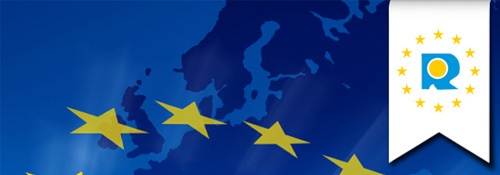#IPLaw, #TMLaw – Introduction to so-called non-traditional marks acceptable in Europe
As you may already know, the trademark is a title deed, having the specificity of protecting a distinctive sign for products and / or services designated. As a title deed, it enters the company’s assets and significantly affects its valuation.
The trademark principle is to enable the consumer to associate your competitive advantage with your business. In broad outline, if a consumer sees a sign on a third-party’s product that makes him think it’s your product (because of the similarity to your trademark), the third-party has de facto infringed your trademark. In practice, it is recommended to file trademarks for both the company name, the logo, and each new product or service.
The European Union IP Office (EUIPO) has modified its rules to remove the requirement of graphic representation of the registered trademarks. This opened the door to the filing of what was later called non-traditional marks.
We will now give a classification of these marks. Non-traditional marks are those whose filing may be of interest but may generate specific issues that are critical to registration. Prior to the change of law, some of these categories had a high probability of rejection for reasons that may persist and that must be addressed in each case.
Traditional trademarks include
– word mark, and
– figurative mark with or without word elements;
Non-traditional trademarks include
– shape mark with or without verbal elements;
– position mark;
– pattern mark;
– color mark or combination of colors;
– sound mark;
– motion mark;
– multimedia brand; and
– hologram mark.
1 °) Word mark
In the terms used by the EUIPO, “a word mark consists exclusively of words or letters, numerals, other standard typographic characters or a combination thereof that can be typed“.
These are classically words forming a mark regardless of the style and colors of the of characters.
For example “SOTERYAH” is protected by a French and UK filings independently of the logo. This is probably the case with the name of your company.
2 °) Figurative mark
According to the official definition, “it is a trade mark where non-standard characters, stylisation or layout, or a graphic feature or a colour are used, including marks that consist exclusively of figurative elements” .
Company logos, product ranges or products fall into this category.
The figurative mark may include word elements and forms a separate category. It is for example the case of a mark combining a logo and a company name or product / service name. For a better protection, it is recommeded to give preference to a figurative mark and a word mark as much as possible (although this increases the costs).
3 °) Shape mark
In the terms used by the EUIPO, “a shape mark consists of, or extends to, a three-dimensional shape. It can include containers, packaging, the product itself or its appearance“.
It concerns the protection of the three-dimensional form of a product or its packaging, considering that this form is considered by the public as identifying the products of the applicant, and that the form is not guided by technical considerations.
The shape of the Mini-Cooper was the subject of many comments. The main examples concern the shapes of bottles and perfume flasks.
The shape mark may also include verbal elements. Again, for better protection, preference should be given, as much as possible, to separate filings, for example a figurative mark and a word mark (in spite of the costs).
4 °) Position mark
According to the official definition, “a position mark consists of the specific way in which the mark is placed or affixed to the product“.
The most related example concern the position of elements on shoe sides or soles. Distinctiveness and non-deceptiveness must, however, be verified on a case-by-case basis.
5 °) Pattern mark
In the terms used by the EUIPO, “a pattern mark consists exclusively of a set of elements which are repeated regularly“.
Many examples come to mind, including motifs of leather luggages or bags.
6 °) Color mark (single color)
According to the official definition, “a colour single mark is just that – a trade mark which consists exclusively of a single colour (without contours)“.
Examples could include colors of product or of their packaging, such as packagings of sodas or chocolates. Here again, particular attention must be given to the criteria of distinctiveness and non-deceptiveness namely.
The combination of colors is also possible and belongs to a separate category.
7 °) Sound mark
In the terms used by the EUIPO, “a sound mark consists exclusively of a sound or a combination of sounds“.
This category includes jingles or sound backgrounds, such as the famous ones of a transport company jingle or of a lion roar.
8 °) Motion mark
According to the official definition, “a trade mark consisting of, or extends to, a movement or a change in the position of the elements of a mark“.
Moving logos of computer programs or cinematographic productions may fall into this category.
9 °) Multimedia mark
According to EUIPO, “it consists, or extends to, the combination of images and sound“.
This category should be considered if it is not planned to separate the movement from the sound. In the opposite case, preference should be given to multiple filings, for example a movement mark and a sound mark, for better protection.
10 °) Hologram mark
According to the official definition, “a hologram mark consists of elements with holographic characteristics“.
They can be defined as 3D images appearing as “suspended in the air”. Typical examples are anti-fraud systems such as holograms of identity documents.
As a conclusion there are at least 10 ways to mark your territory, so on your marks!



Leave a Reply
Want to join the discussion?Feel free to contribute!